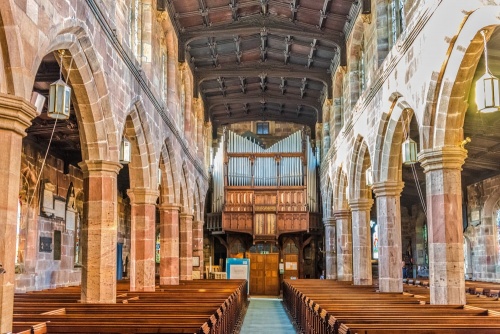Sandbach History - St Mary's Church
The Domesday Book (c. 1086) records the presence of a priest and a church on the site of the present church, and it is shown on an 1840 map of the town centre of Sandbach.[3] This was replaced by another church erected about the time of Henry VII. This church was built in sandstone which became badly weathered. The present church dates largely from the considerable degree of rebuilding by Sir George Gilbert Scott in 1847–49. Much of the existing fabric was replaced and the remaining fabric was encased in new stone. The east end of the church was extended by some 40 feet (12 m) and the tower was rebuilt as a copy of the former tower.[4] The builders were Cooper and Son of Derby. The stone, which came from quarries in the Mow Cop area, was given by Sir Philip Grey Egerton M.P.[5] Part of the west end had to be repaired in 1894–95 following a fire.[1] In 1930 Austin and Paley added a choir vestry, and a north porch, at a cost of £1,331.[6] The parish registers date from 1562 and are complete. The churchwardens' accounts prior to 1888 are lost.
Outside the west doorway are several fragments of Saxon crosses. These originally stood near the famous Sandbach Crosses in the town square but were moved to the churchyard to protect them from damage by passing motorists. There are also several pieces of tomb slabs, used to cover stone coffins. Like the cross pieces, the tomb slabs date to the 8th century.
The oldest memorial in the churchyard is to John Fletcher the Elder of Cresswallshawe (now known as Cresswellshawe) who died in 1660. The tomb is on the south side of the church near its east end.
Most of the interior furnishings date to Scott's restoration in 1847. Among the Victorian furnishings is the font, made from Caen stone by a local craftsman named Thomas Stringer in 1857. It is carved with a palindrome (words that read the same forwards and backwards) in Greek text reading 'NIYON ANOMHMA MH MONAN OYIN' which translates as 'Wash my guilt and not my face only'.




